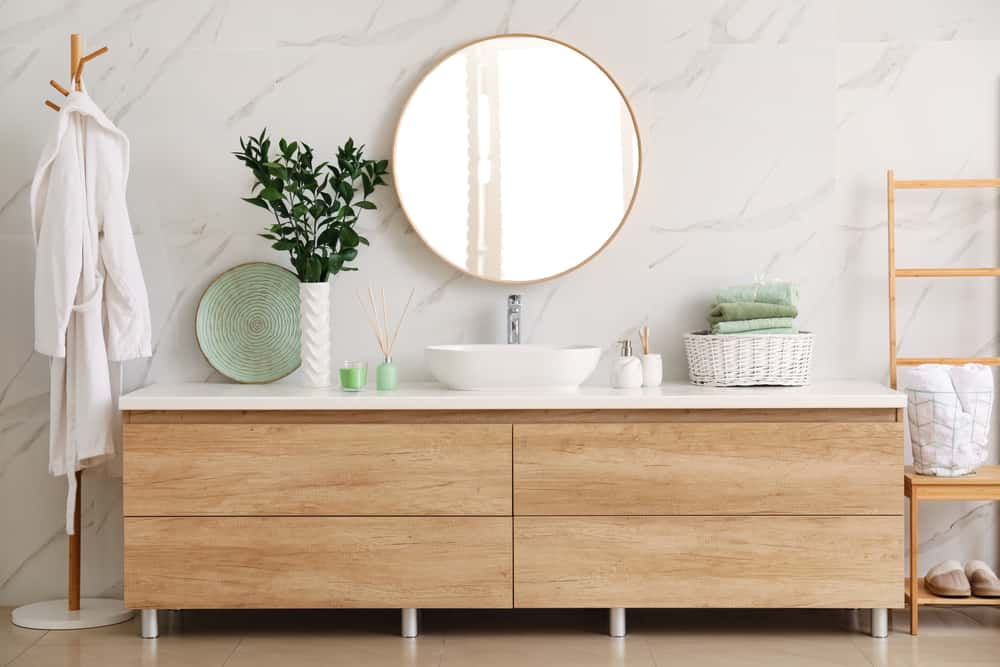A well-designed bathroom can help you achieve your everyday needs efficiently and give you that valuable space of solitude to unwind. Your bathroom design and aesthetics truly set the tone for the rest of your home.
Designing your bathroom needs to be planned and well-thought-out. Bathroom countertops are the focal point in any bathroom and catch a person’s attention immediately.
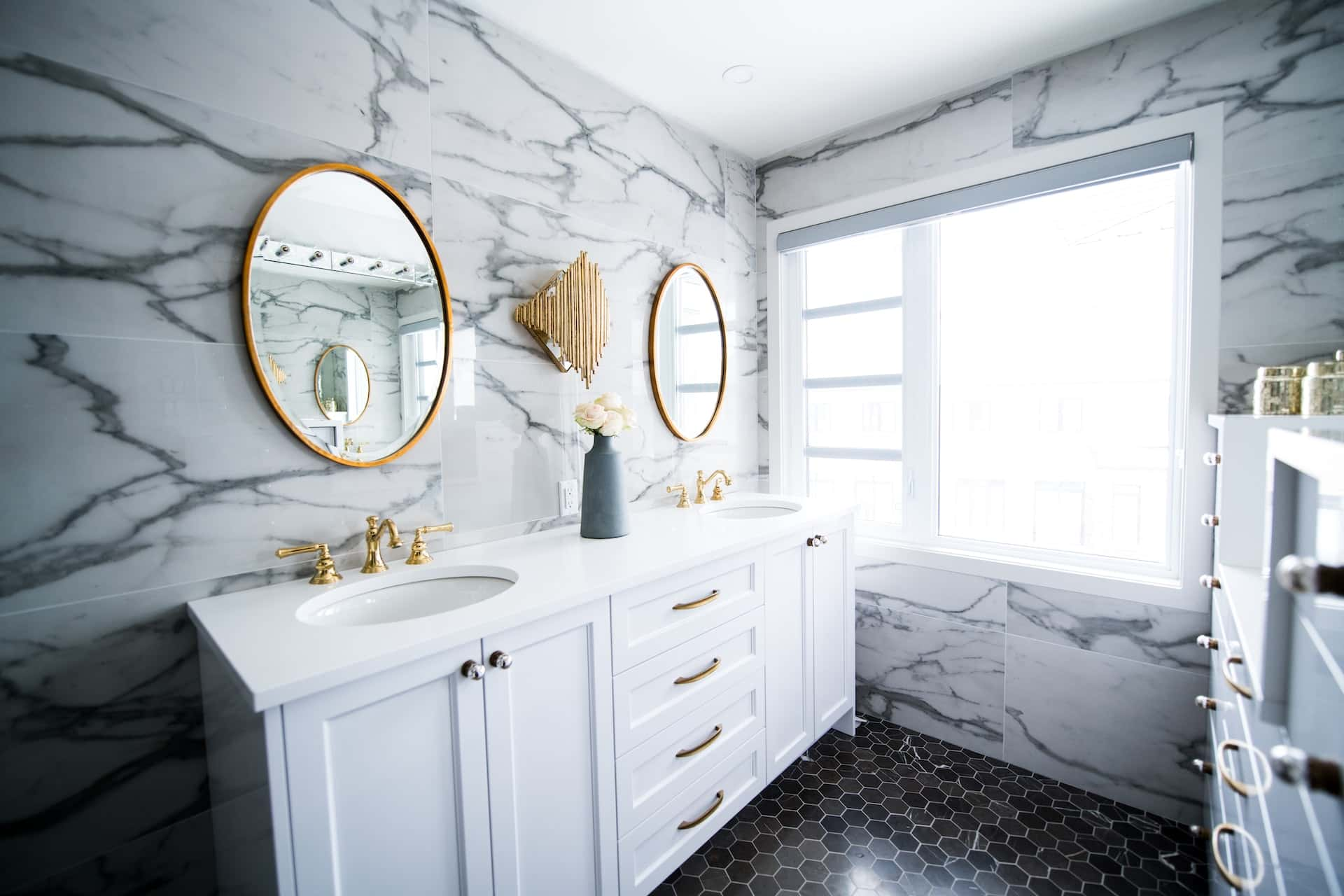
Countertops are the most functional parts of any bathroom. Adding cabinets around your countertop can create storage space for your bathroom essentials. They can also be adorned with plants and stylish placeholders.
Vanity tops can be designed out of many different materials. And choosing the same can be confusing and frustrating. In this article, we will guide you through the advantages and disadvantages of the most commonly used base materials.
A broad criterion for designing your customised vanity top should include – aesthetics, cost (budget), durability and maintenance. Functionality is important too, but bathroom surfaces receive lesser wearing compared to kitchen countertops. “Kitchen countertops have to be a whole lot more functional….You can have a different attitude in the bathroom”, states Myron Ferguson, the author of Better Houses, Better Living.
For instance, cultured marble is lovely in the bathroom, but it would not be durable enough for a kitchen. Glass can also be used to create elegant vanity tops, but keeping it fingerprint and smudge free will be a challenge, and solid glass slabs are quite expensive.
Most modern bathroom countertops consist of these common materials: Natural stone (granite/marble), quartz, solid surface, wood, ceramic/porcelain tiles and concrete. Choose the best ones for your bathroom interiors.
Natural Stone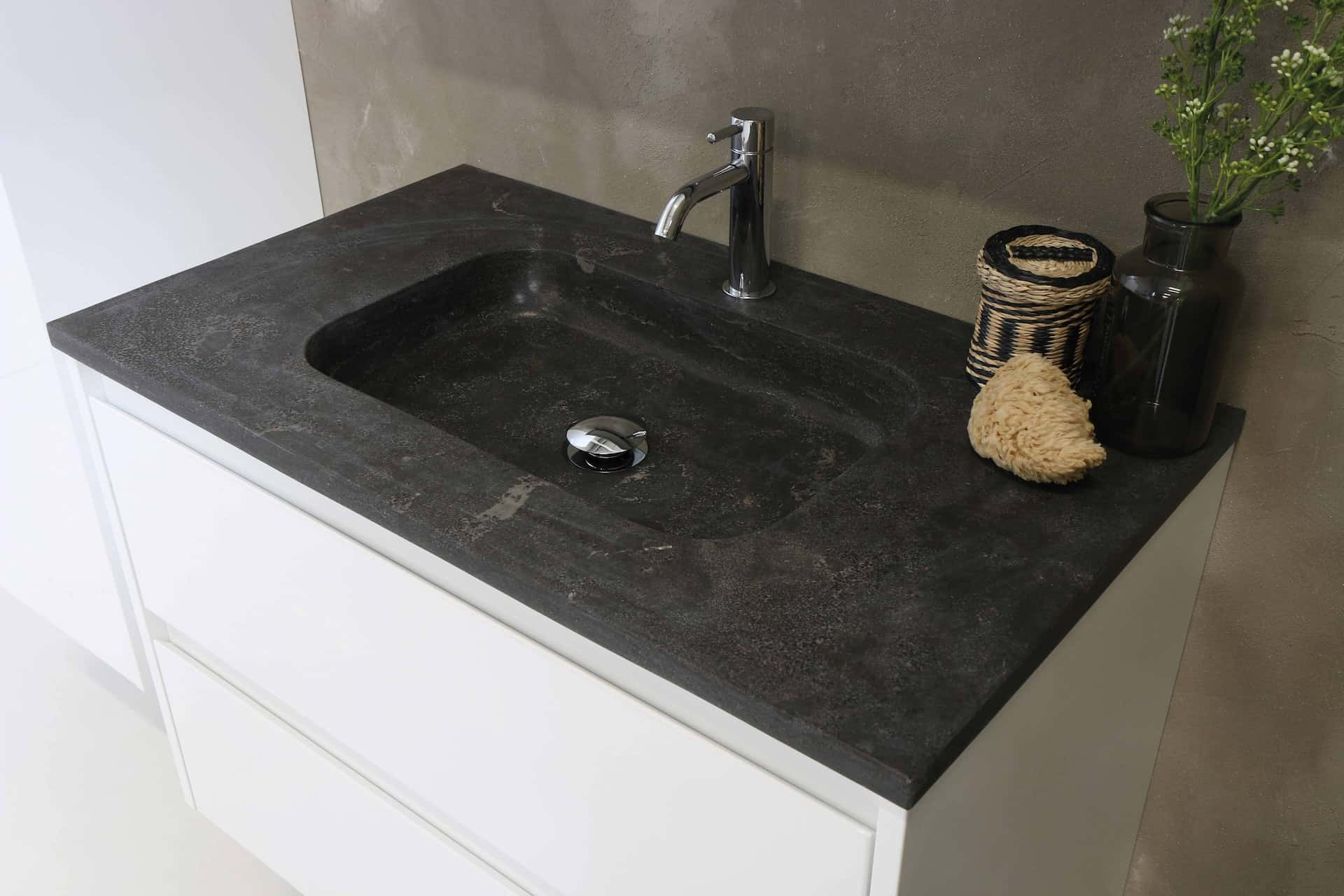
Natural stones are premium building materials that exude grandeur. The choice of the stone increases the variety of options in terms of colours and patterns, as no two stone patterns look alike.
Granite and marble are some of the most common stones used to design countertops.
Granites are long-lasting, stain resistant and beautiful. They come in a variety of patterns made elegant by their flecks of different colours. Each granite slab is unique. It is so popular that it could add to the resale value of your home.
It is highly durable and easy to take care of. Cleaning granite countertops is fairly easy; all you will need are warm water and liquid detergent.
Granite is a porous material and may absorb stains. But, this can be easily countered by getting the surface sealed at least once a year. Avoid using abrasive cleaners on granite as they might dull the finish of the surface.
Marbles have been a symbol of luxury and good taste for centuries. Marble slabs have a soft texture and beautiful vein patterns. They are available in different styles and colours. They are usually sold in an unpolished form and can be polished only after installation.
Like granites, marbles stain easily as well. They need to be sealed periodically to protect the surface from stains and watermarks.
Marbles may be slightly more expensive than granite. But, the cost of both stones is determined by the grain quality and grade of the material. Both of these options have similar benefits and drawbacks. Choosing one between the two is a matter of preference and style.
Quartz
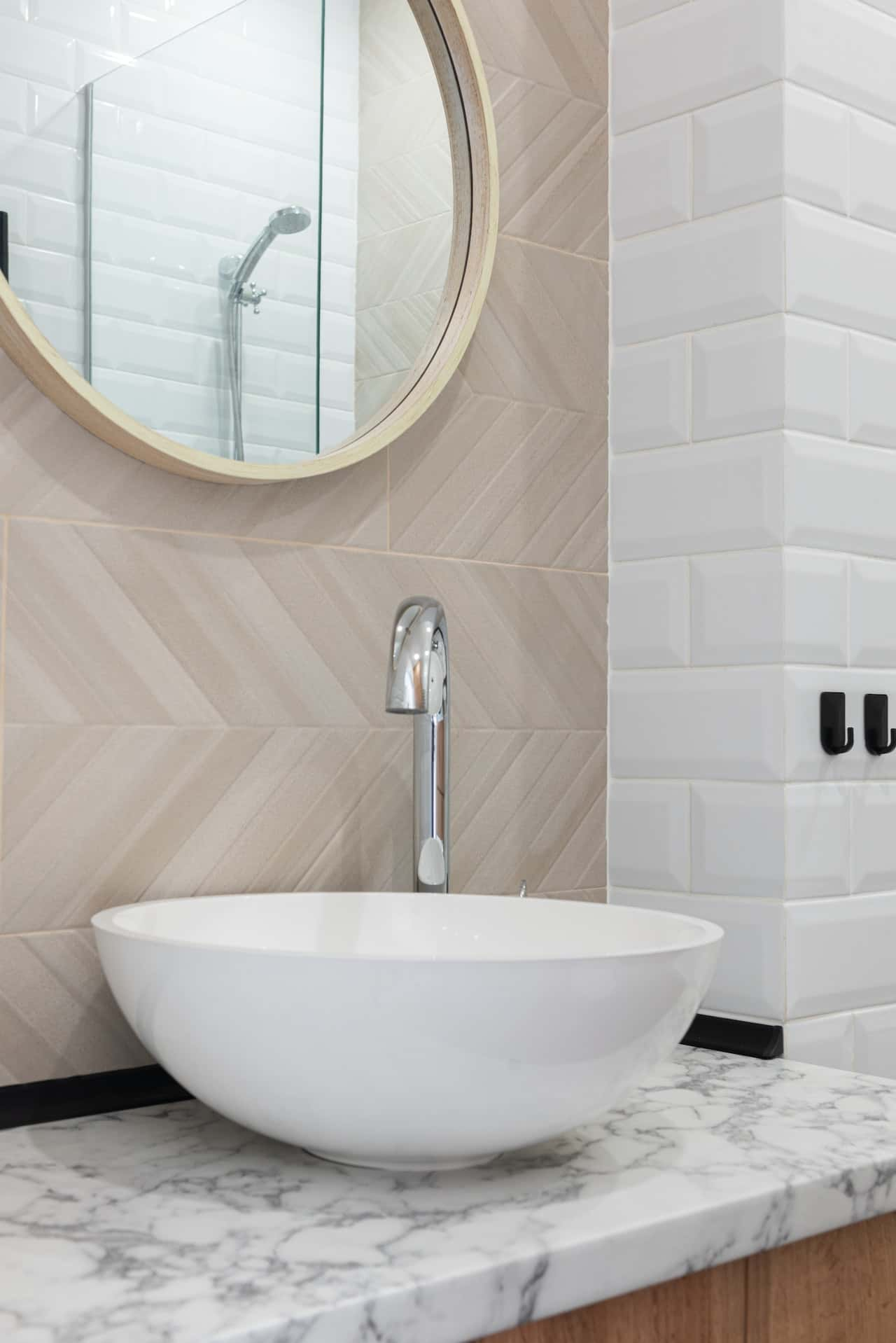 Quartz is one of the hardest, most abundant materials found in nature. Quartz countertops actually contain very little quartz in them. They are engineered stones made of a polymeric or cement-based binder mixed with crushed-up waste granite, marble, natural stone, etc.
Quartz is one of the hardest, most abundant materials found in nature. Quartz countertops actually contain very little quartz in them. They are engineered stones made of a polymeric or cement-based binder mixed with crushed-up waste granite, marble, natural stone, etc.
All this rock material mixed together and held together by binders gives quartz countertops the look and feel of stone. Quartz countertops are often made and sold with sinks integrated into them.
Using quartz is more eco-friendly compared to other stone-based countertops. Quartz is non-porous, making it less susceptible to bacteria and mould. It is also heat-resistant and quite durable in the long run. However, quartz countertops can match high-end granite and marble ones in cost.
Solid Surface
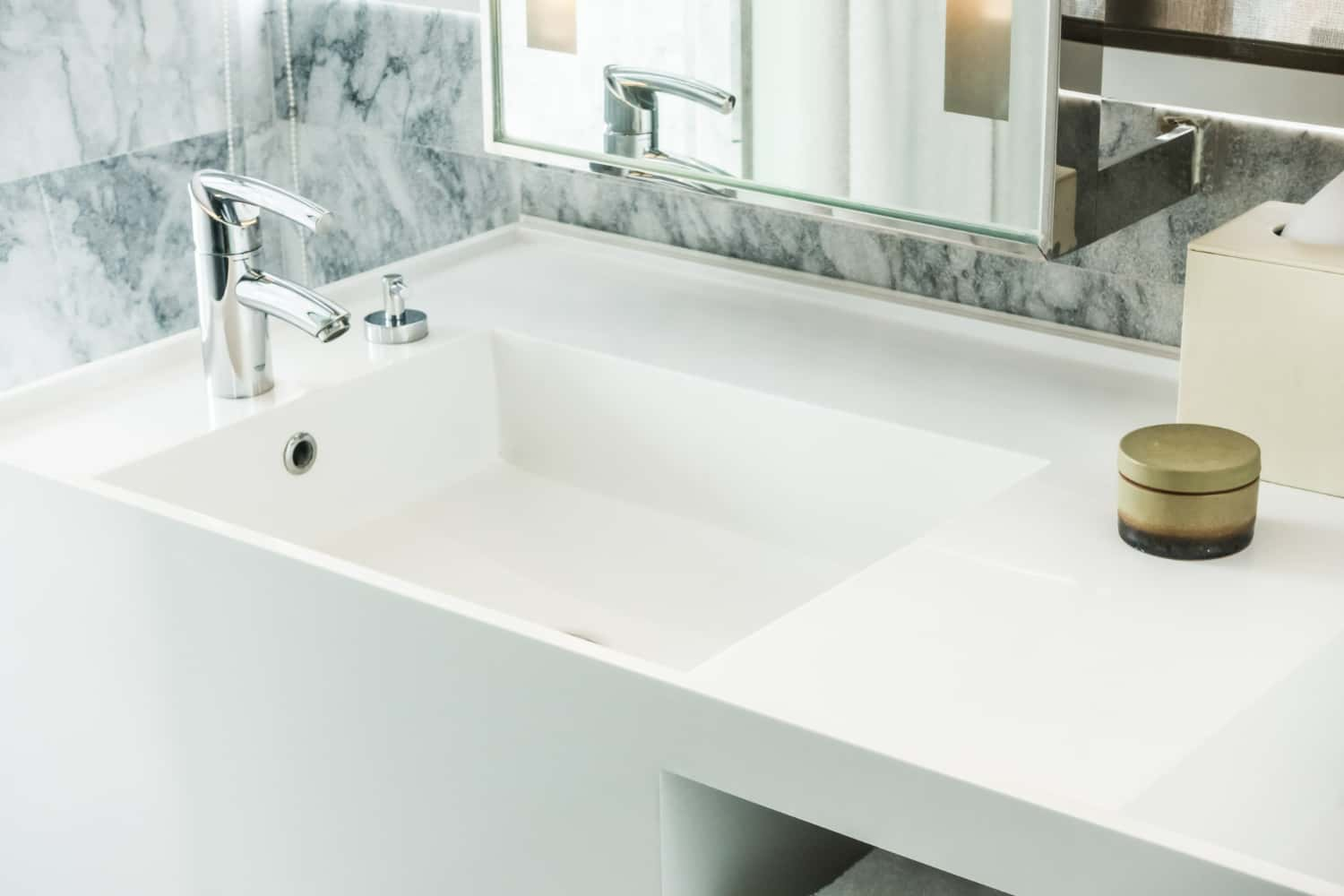 Solid surface is factory-manufactured, high-end countertop material. It is designed to look like natural stone but is, in fact, more artificial than quartz. It comes in many colours and is usually sold in India under its manufacturer’s name, Corian.
Solid surface is factory-manufactured, high-end countertop material. It is designed to look like natural stone but is, in fact, more artificial than quartz. It comes in many colours and is usually sold in India under its manufacturer’s name, Corian.
A solid surface is quite malleable; it can be moulded into any shape. It can be easily designed into a seamless countertop with an integrated sink. It is a hypoallergenic surface and is easy to maintain/refurbish.
Solid surface is great mid-range countertop material. You can even choose the type of finishing you want for its surface: matte, semi-gloss and high-gloss. Matte finish is preferred for surfaces that will undergo more wear and tear, while high-gloss should only be considered in areas where aesthetics outweigh durability.
Even though solid surface has several benefits, some homeowners do not prefer its plastic look. But, if you value durability and lesser maintenance, solid surfaces can be the right choice for you.
Wood
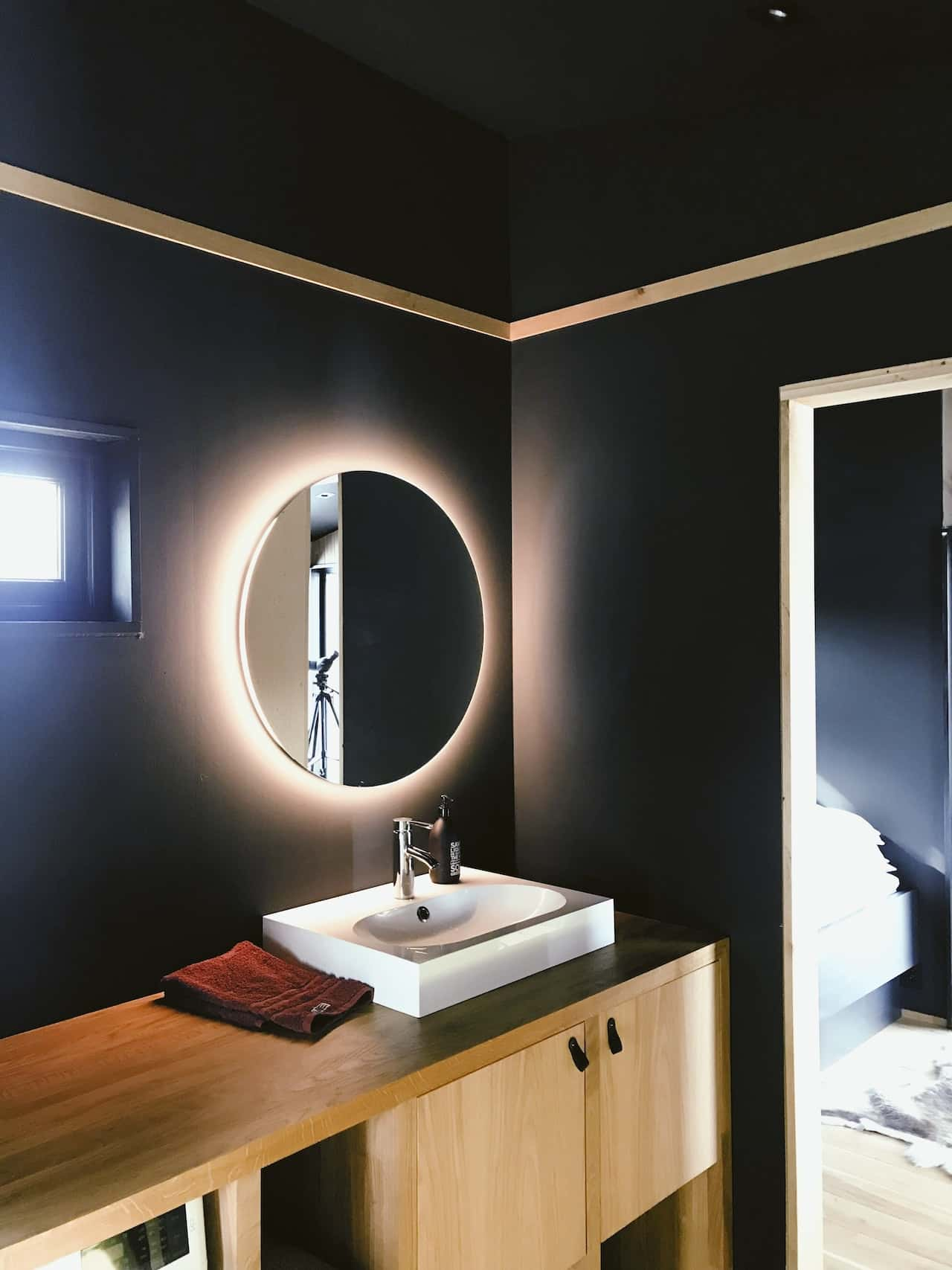 A wood vanity top can bring warmth to any bathroom. Natural wood tones bring a soothing feel to any aesthetic. As shown in the image above, wood countertops add a certain class to your washroom.
A wood vanity top can bring warmth to any bathroom. Natural wood tones bring a soothing feel to any aesthetic. As shown in the image above, wood countertops add a certain class to your washroom.
Wood countertops are design agnostic since they can be cut into any required shape. The choice of wood also creates a different experience altogether. Exotic hardwood or bevel offers a luxurious touch to bathrooms, while a simple redwood slab creates a rustic, earthy feeling. Live-edge wood slabs are also quite popular in designer washrooms.
Compared to stone, wood will be easier on the pocket. It will be cheaper to source good quality wood and design it into a shape of your liking.
As pleasing as wood looks, it is a very high-maintenance countertop option. Wood is more vulnerable to moisture than any other countertop material. But, it can be protected by properly sealing it and keeping the washroom well-ventilated.
Wood finishes also degrade over time. But, a well-applied layer of epoxy can easily refurbish that and give a classy light reflecting wood surface.
Ceramic/Porcelain Tiles
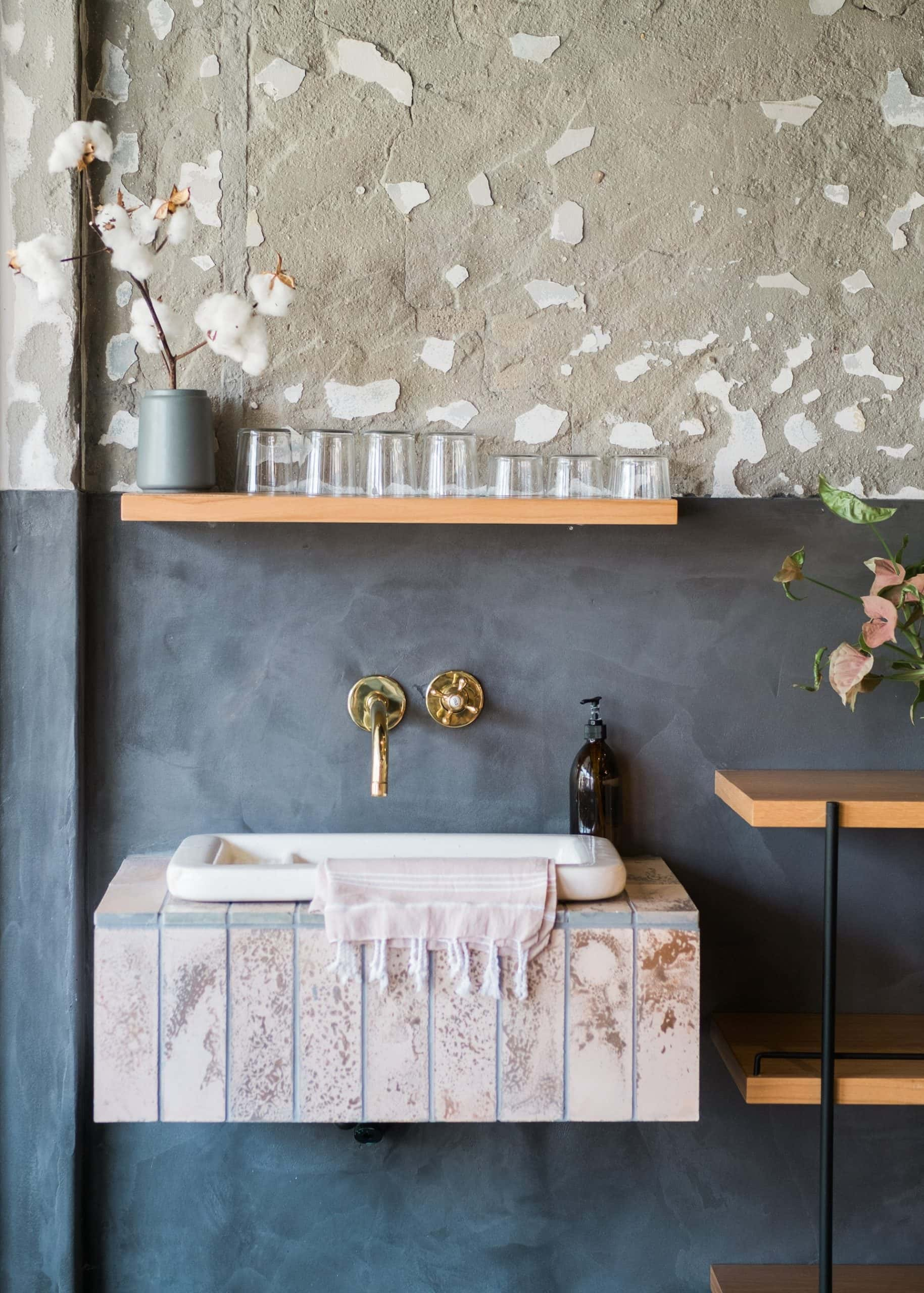 Ceramic or porcelain tiles are easily available in different colours and sizes. Tiles give an artistic look to the countertop. They are also the perfect choice for DIYers who wish to design their own trendy countertops. Porcelain is a type of ceramic that is harder and denser in nature. Porcelain is an effective option for floors and countertops.
Ceramic or porcelain tiles are easily available in different colours and sizes. Tiles give an artistic look to the countertop. They are also the perfect choice for DIYers who wish to design their own trendy countertops. Porcelain is a type of ceramic that is harder and denser in nature. Porcelain is an effective option for floors and countertops.
Tiles are manufactured in plain and patterned designs. Interspersing plain with patterned tiles, or vice versa is used quite commonly. This layout of using multiple tiles gives you numerous design options to experiment with.
If you feel particularly creative, you can create a mural made of tiles and smaller tile pieces. This will make your washroom completely unique and give you the chance to design something that holds meaning to you.
The main drawback of using tiles on your countertop is the maintenance and cleaning. Tiles break easily and would need a replacement for larger cracks. Grout lines can discolour or stain the tiles. Luckily, tiles can be cleaned using easily available household cleaners.
A quick tip to keeping your vanity top looking elegant is to use a coloured grout that does not show dirt easily and compliments the tile colours. A golden-coloured grout with light-coloured tiles can radiate a regal feeling right in your home!
Concrete
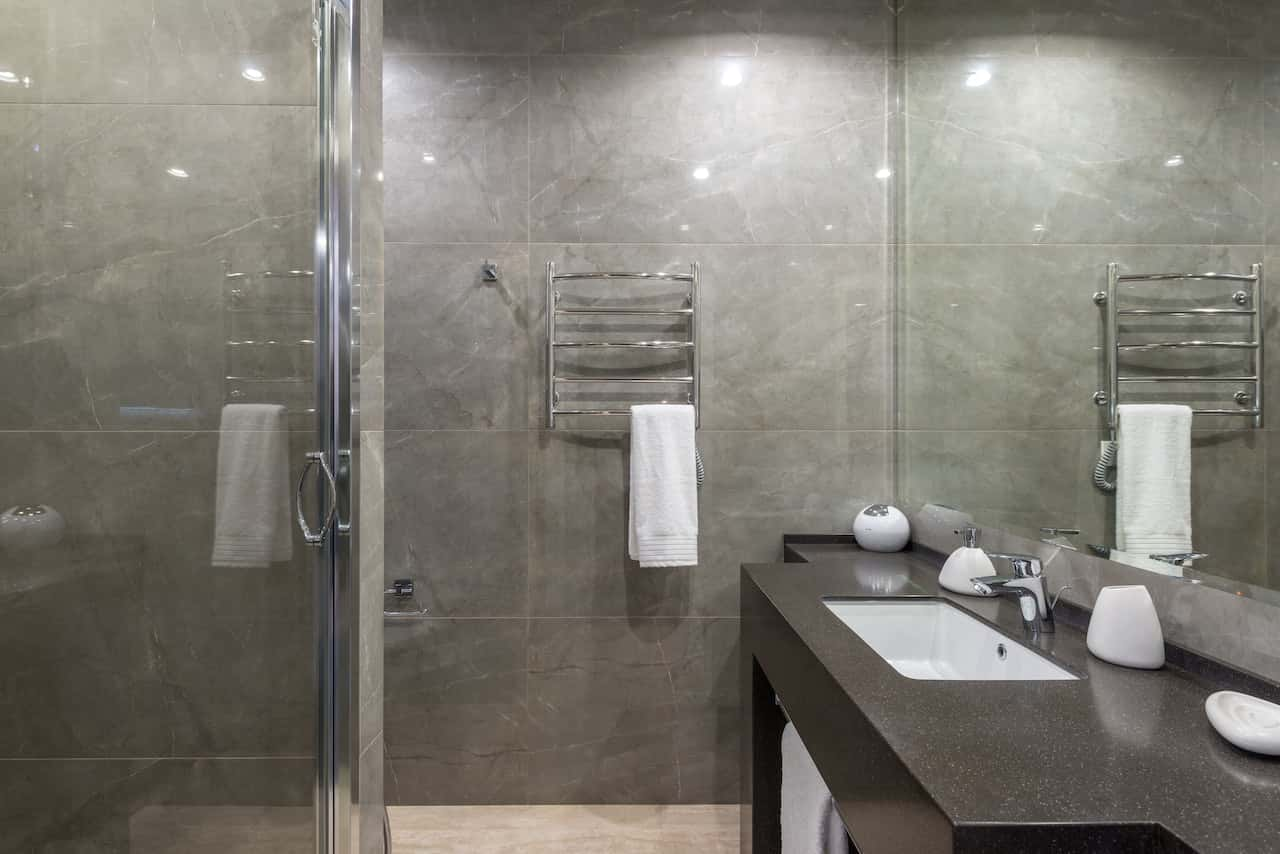 Concrete is not just an industrial material anymore. Nowadays, it is quite a popular choice for countertops. Concrete countertops are stained, highly polished surfaces. As they can easily be cast into any shape and size, concrete has become a high-end option to add glitz to your washroom.
Concrete is not just an industrial material anymore. Nowadays, it is quite a popular choice for countertops. Concrete countertops are stained, highly polished surfaces. As they can easily be cast into any shape and size, concrete has become a high-end option to add glitz to your washroom.
Concrete is very durable and robust. Its polished surface will even be scratch resistant and unaffected by moisture.
One of the drawbacks of concrete surfaces is that it is susceptible to cracks. Although these can easily be filled and sealed, there is a good chance that the repair work will be visible.
Concrete is also quite heavy: cabinets and flooring beneath it often need to be strengthened to bear its weight. Premium concrete vanity tops also need to be fabricated specifically, which can be quite cost-intensive.
What Does Your Countertop Say About You?
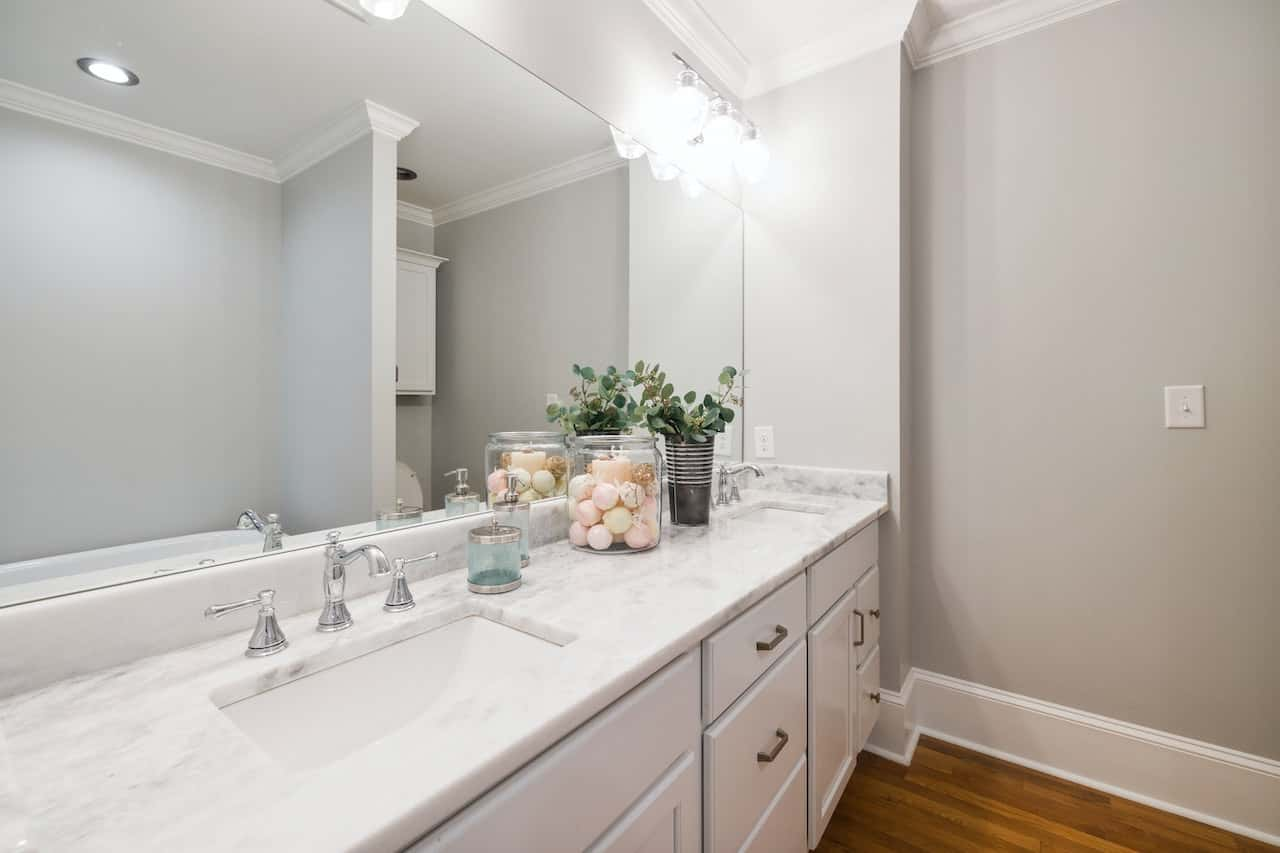 Above, we have listed some of the most common options to personalize your bathroom countertops. You may even choose to use a combination of two or more different materials if they work well together.
Above, we have listed some of the most common options to personalize your bathroom countertops. You may even choose to use a combination of two or more different materials if they work well together.
If you wish to minimize expenditure, tiles and solid surfaces are good options. They both have lesser installation and maintenance costs. For durability, stone and concrete vanity tops are unmatched. For specific countertop designs that require a lot of modifications, using wood might be a good fit, as it can be cut into any shape.
There is no one vanity top that would suit all homes. Selecting one should be done, keeping in mind your choice’s practicality and how a particular countertop makes you feel. Designing a bathroom, or even a home, is not just a logical decision that checks the most boxes. It is an extension of who you are and how you wish to be perceived.
A number of exclusive interior design establishments, like HomeLane, offer a personalised experience for designing your own home. They assess your individual needs, space requirements and design preferences. Based on these parameters, they recommend design and product options that encompass everything you need from your home.
FAQs
What is the best material to use for a bathroom vanity top?
The best material for a countertop would depend on a number of factors like aesthetics, cost (budget), durability and maintenance. Each material offers different benefits. In general, choose a material that is practical to use in your washroom and provides the pleasing feeling of home to you.
Some of the most common materials are natural stones (like granite, marble, limestone or travertine) and tiles. Stones are highly durable and low maintenance. While tiles offer a unique customization option and are cheaper to install. Countertops made of natural stone are significantly costlier than ones made from tiles.
What are the options for vanity tops?
There is a variety of options available for vanity tops. Quartz and Solid surface are durable countertop materials. Both are artificially manufactured and easily available.
Natural stone and concrete are some high-end options that require some maintenance but add elegance to every washroom. Wood and tiled countertops are easier on the pockets and provide leeway to be customized to size.
Some other options include laminates, glass and stainless steel. Laminates are comparatively cheaper than most options and are mass-produced in a variety of pleasing colours and styles. Glass countertops bring a refined quality to vanity tops, but maintaining them can be a hassle.
What is the most popular countertop for bathrooms?
Marbles and tiles are some of the most commonly used materials for countertops in bathrooms. White marbled countertops coupled with white tiles are akin to a luxurious bathroom. Although they both have different sets of features, they create an aesthetic feeling that most people in India would relate to.
Which is better for a bathroom countertop?
Countertops made from natural stone are quite versatile for use in any washroom. Stones like granite are durable and require minimal maintenance. Their unique designs add a touch of class to washrooms. Until recently, they were considered a luxury to have in your home. Stones still are the go-to choice for most people, given their resistance to chipping or breaking. Periodic sealing of the stone surface can keep it looking polished and new for years to come.

